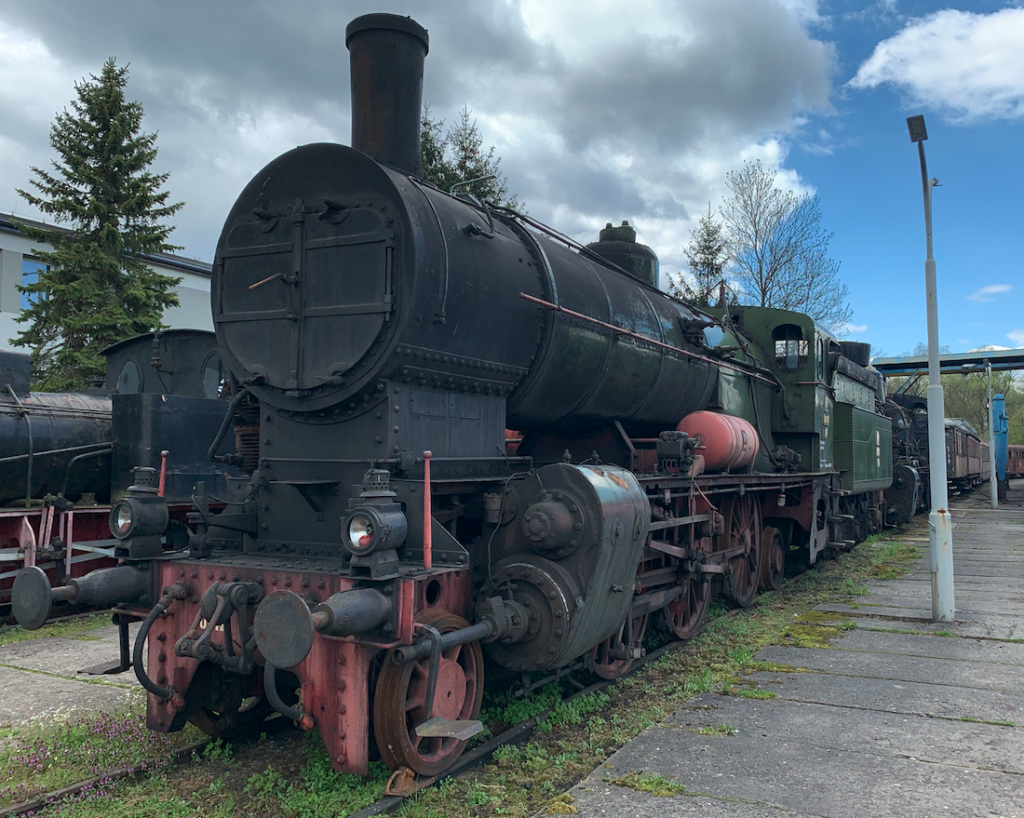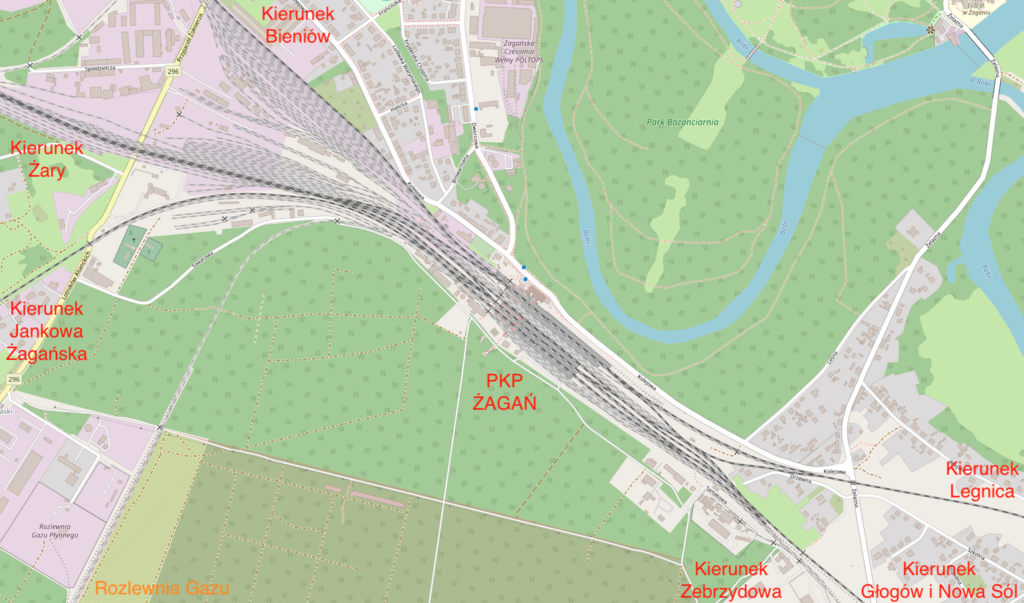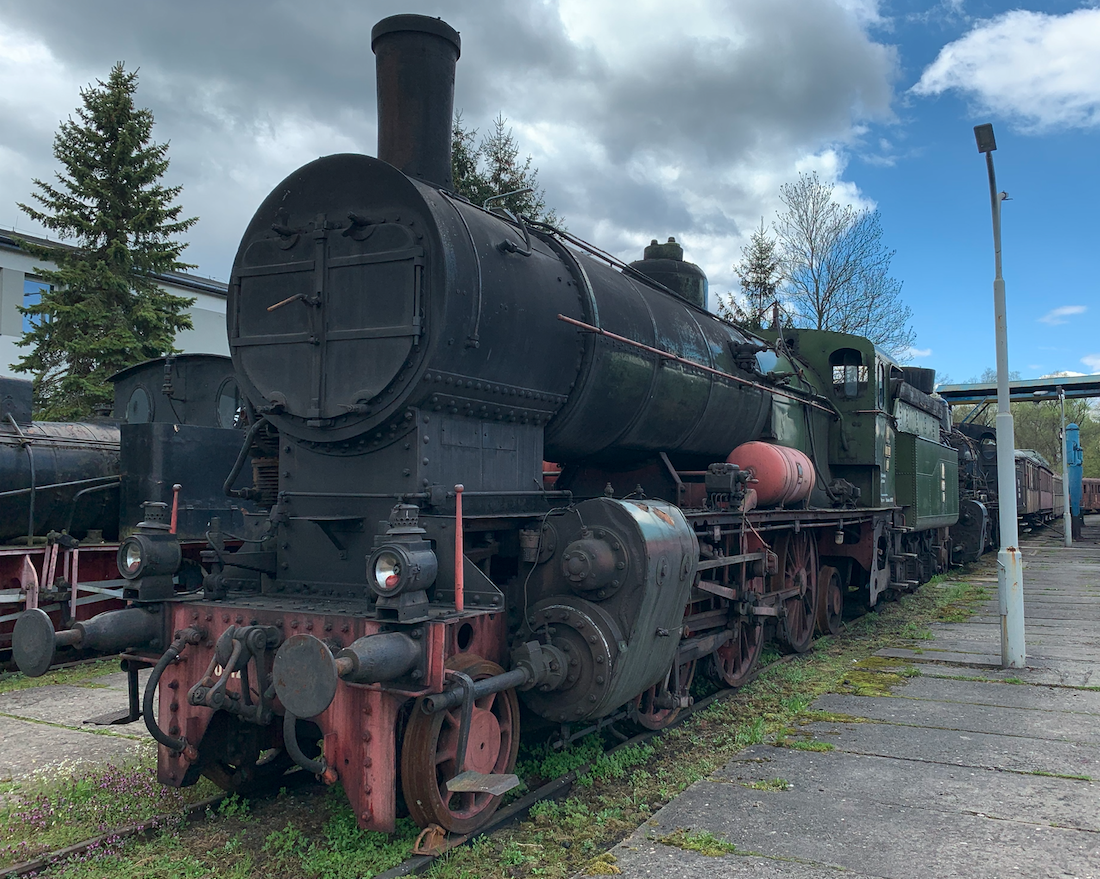Żagań 2022-04-21
Development of the Railway in Żagań.


In January 1845, it was decided to build a railway route from Głogów to Żagań. The investment was supported by the Prussian King Frederick William IV. The investor was the Lower Silesian-March Railway Company. The first train entered the Żagań station from Głogów through Niegosławice and Szprotawa on July 26, 1845. The train brought rails and railway sleepers for further construction of the railway route. The Głogów – Żagań route is 71 km long. Interestingly, the next section of the railway line was first laid to the town of Jankowa Żagańska, and this is because its owner invested her funds. The further route towards the city of Żary was launched on November 1, 1846. At the same time, the Węgliniec – Żary railway line was launched. In 1875, a connection with Legnica and Wrocław was launched. New lines to Stypułów and Kożychów were launched on 1 October 1890. A new line to Świętoszów was opened in 1905. Within 50 years, Żagań became a large railway junction, from which seven railway lines originated. The railway bridge over the Bóbr River still exists today, having been built in the period 1845-1846. All new railway lines were built in such a way as to easily lay a second track, both on railway embankments and at bridgeheads. However, the second track was eventually received by the railway line: Żagań – Maroszów – Żary – Sieniawa Żarska. The railway bridge over the Bóbr River is one of the most beautiful monuments of technology. It was built as a stone and brick bridge. It is about 200 meters long and about 10 meters wide. The bridge is set on 19 supports about 10 meters high. The width of the bridge allows for two tracks, although currently there is only one track. It is possible that at the end of the war, the Soviets converted one track into a “wide” one, and when they no longer needed it, they dismantled it and took it to the CCCP.
The first wooden station building in Żagań was built in 1845. In 1876, the station burned down completely. The rebuilt building operated until 1913, when a new station was built, which still exists today (2022). Initially, the station was called the City Station. The station houses ticket offices, baggage offices, a waiting room, a buffet, toilets and more. The ticket offices are not open, but there are ticket machines at the station. The last renovation of the station building was carried out in the period 2017 – 2019. The grand opening took place on May 10, 2019.
Around 1986, a large signal box was built, which still exists today. At the beginning of the 20th century, the station expanded significantly. There were two water towers, several water cranes, a locomotive shed with a fan-shaped depot, a hump, five island platforms, a tunnel for travellers, a service tunnel for railwaymen, a locomotive dormitory for railwaymen, a liquid fuel station for diesel locomotives, a wagon washing station, track lighting, unloading ramps, storage yards, warehouses and others. Each of the platforms is equipped with a steel shelter, the structure of which is riveted. The roof is covered with boards and roofing felt. The fan-shaped locomotive shed with a turntable, standing in the western head of the station, has not been used since around 2010, and was dismantled around 2016. The station level is huge and creates a complex of several stations. From the front of Platform 1, on a blind track, there is a steam locomotive Ok1-198, which is a museum exhibit and a monument of technology.
Currently (2022) the following railway lines run through Żagań: railway line no. 14 Łódź Kaliska – Forst/Baršć, railway line no. 275 Wrocław Muchobór – Guben, railway line no. 283 Jelenia Góra – Żagań, railway line no. 371 Wolsztyn – Żagań, railway line no. 389 Żagań – Jankowa Żagańska. In Żagań, freight traffic is high, and passenger traffic is low, mainly served by diesel multiple units. The railway junction in Żagań is not electrified, which is why steam locomotives reigned here for many decades, and in the past 60 years they have been joined by diesel locomotives.
History of railway routes Żagań.
Żagań is still a large junction station. In the 40s of the 20th century, railway lines went out in seven directions. In the period 1846 – 1945, the station in Żagań was called Sagan, and from 1945, Żagań. Stupid Germans, started the Second World War and lost a lot of land.
The Żagań – Zebrzydowa railway line was dismantled by the Soviets in 1945, and taken to the CCCP. It was 47 km long. It led south through: Świętoszów, Łapszów, Kliczków to Zebrzydów. The line was single-track. In 1948, in Poland, the line was placed on railway maps, because its reconstruction was planned. The lines were rebuilt and in 1988, it had No. 250. Currently No. 283. In the 90s, the line was partially dismantled. In October 2019, PKP PLK announced a tender for the revitalization of railway line No. 283 on the Zebrzydowa – Żagań section. This means the reconstruction of the formally liquidated Ławszowa – Żagań section. PLN 284.3 million net was planned for work on 45 kilometers. All contractors’ offers exceeded this cost estimate. The renovation is to be carried out at the initiative of the Polish Army and residents. Currently (2019), most of the Zebrzydowa – Żagań section is formally liquidated (Ławszowa – Żagań in km 77.621 – 103.750). It is physically impassable (lack of rails, sleepers, fishplates, connectors). On the Zebrzydowa – Ławszowa section, the following currently apply: speed in km 60.399 – 61.100 – 40 km/h, in km 61.100 – 77.621 – 20 km/h. Engineering structures are partially liquidated. There are no traffic control devices on the entire section of the railway line.
The Żagań – Jankowa Żagańska railway line in 1948 was number 240 and runs in a south-westerly direction. It is 16 km long and is single-track. In 1988, the line had No. 359, and currently (2022) No. 389. Currently, a passenger train covers this route in 14 minutes.
The Żagań – Żary railway line in 1948, had the number 359 and was double-track. The line is 14 km long and runs westwards. In 1988, the line had the number 358. Currently (2022) a passenger train covers this route in 10 minutes. The Lower Silesian Railways and PolRegio trains connect these cities with connections every 90 minutes.
The Żagań – Bieniów railway line in 1948, the line had the number 235 and was impassable. The line was 18 km long. In 1950, the line was restored to traffic as a single-track. In 1988, the line had the number 358a and was an alternative westwards, bypassing the Żary station.
The Żagań – Kożuchów – Nowa Sól railway line in 1948 was double-track and had No. 323. It was 38 km long and was important because it connected “Nadodrzanka” with the alternative Wrocław – Berlin route. In 1988, the route had No. 352. In the 90s, the route used the Żagań – Głogów route to cross the Bóbr River. After diverging to the north-east from the route to Głogów and running through Kożuchów to Nowa Sól. Unfortunately, the route was dismantled.
The Żagań – Szprotawa – Głogów railway line in 1948 had No. 242. Length 61 km. In 1988, the line had No. 358. Currently (2022) the route has No. 14 and is used only for freight traffic. You can take a passenger train between Żagań and Głogów via Zielona Góra or Legnica.
The Żagań – Legnica railway line is one of the most important railway lines to Żagań. In 1948, the line was number 235, and in 1988, No. 260. The distance from Żagań to Legnica is 84 km. Currently (2022) the route is covered by passenger trains of the Lower Silesian Railways, and the travel time is 66 minutes.
Rail lines; No. 14 Łódź Kaliska – Forst/Baršć. No. 275 Wrocław Muchobór – Guben. No. 283 Jelenia Góra – Żagań. No. 371 Wolsztyn – Żagań. No. 389 Żagań – Jankowa Żagańska.
Military.
General Józef Haller’s Blue Army. From April to June 1919, Żagań was the place where rail transport of part of General Józef Haller’s Blue Army took place. Polish soldiers transported to the local station by French echelons were transferred to Polish echelons and transported to Kalisz.
Before the outbreak of World War II, Polish intelligence had an agent on the Żagań railway, a railway dispatcher, who identified German military units and reported on their movements. Thanks to it, almost all units that were directed through the Żagań railway junction to concentration areas in the period 1937-1939 were identified.
During World War II, thousands of prisoners of war from all over the world passed through the Żagań station. Nearby (approx. 1 km south of the station) was one of the largest complexes of German POW camps. Some of the prisoners – soldiers taking part in the great escape from the Stalag Luft III camp continued their escape on trains departing from the Żagań station.
On July 27, 1945, the first Polish passenger train in the Recovered Territories arrived here from Wrocław Główny station, carrying railway workers whose task was to establish a PKP sub-directorate here and take over the service and railways from the Soviet authorities. It operated under the management of the PKP from August 20, 1945 to September 17, 1945.
Until 1958, the Żagań railway station was subordinate to the District Directorate of the State Railways in Wrocław, and then in Poznań. In June 1971, the first diesel locomotive arrived at the local station and was assigned to the Żagań locomotive depot, although trains with diesel traction had already passed through the station. On May 31, 1991, the last scheduled run of a train pulled by a steam locomotive took place.
Freight traffic in the Żagań junction is developing well. More and more freight trains are on international routes. In 2018, Żagań station served up to 500 passengers per day. Passenger traffic is mainly served by railbuses and DMUs. The most popular route is Wrocław – Forst in Germany.
Infrastructure of Żagań station.
Geographic coordinates of Żagań station 51.604N, 15.315E. Elevation 102 m above sea level. Address ul. Kolejowa, 68-100 Żagań.
The former glory of the station in Żagań is evidenced by its size, five platforms and a dozen or so tracks. It used to be the largest and one of the busiest railway junctions in the Lubuskie Region. In Prussian times, trains from Berlin, Wrocław, Halle, Zgorzelec, Dresden, Głogów, Poznań, Szprotawa, Nowa Sól, Świętoszów and Lwówek Śląski arrived in Żagań. Already in Polish times, it was possible to travel from Żagań to Wrocław, Warszawa Wschodnia, Łódź Kaliska, Poznań. Long-distance trains on the following routes passed through Żagań: Jelenia Góra – Zielona Góra, Jelenia Góra – Szczecin.
The station in Żagań can be divided into a passenger section and three equally stationary freight sections. The passenger section consists of 5 double-edged platforms, connected by an underground passage with the station building in the north towards the city and an exit towards Kolejowa Street in the south. The track system provides quite a lot of versatility, although it is not possible to exit from every platform in every direction.
Behind the platforms to the west, there is a split into 3 track groups. The southern group is the smallest, consisting of only 3 main tracks. This is where trains leave for the line towards Janków Żagańska. There are four side tracks here, ending with retaining trestles. This is where the rolling stock maintenance plant is located. Further on, the main tracks cross Lotników Alianckich Street (DW 296). Nearby, there is an unused railway signal box.
In the middle, there is the so-called “B” group, consisting of 9 main tracks. There used to be a hump here, of which only shunting shields and the former “Żg2” signal box remain. Some of the tracks end with retaining trestles. The station head has been partially dismantled. Most of the tracks pass through two viaducts over Lotników Aliantówch Street (DW 296). The southern viaduct is a tunnel about 40 m long, and the northern viaduct is about 10 m long. From Lotników Alianckich Street, a road leads east to the freight station between track groups “A” and “B”.
The last of the track groups is group “A”, serving the exit towards Bieniów. Here, above Lotników Aliantówch Street, there is also a viaduct – a tunnel about 30 m long. There was also a hump here, where the tracks have already been dismantled. This is where the fan-shaped locomotive shed is located, still in use. This locomotive shed serviced steam and diesel locomotives SU46, ST43, SM42, and ST44 are still serviced. In 2010, the locomotive shed was threatened with liquidation, which did not happen.
Three glue sidings led from the station to nearby workplaces. Currently (2022) there is only one, 3,500 m long, to the Gas Distribution Plant.
The Żagań station underwent a major modernization in the second half of the 1980s. Many tracks were replaced. A new rail traffic control system was introduced. Shape semaphores were replaced with light semaphores. Due to the construction of the platform shelters, several semaphores have a reduced height. A modern building for the “Żg” signal box was built with social and living facilities. In the new century, the nearby rail-road crossings and their service were modernized. Closed-circuit television was installed on them.
Back in the 1980s, there were plans to electrify the railway route: Legnica – Żagań – Żary. The plans were not implemented due to the too low load of freight traffic.
A characteristic structure at the Żagań station is the grain elevator, which is located in the eastern part of the station.
Platforms.
There are as many as five platforms at the Żagań station, which is as many as at the Kraków Główny station. All platforms are island platforms and have two edges. The platforms in their current form were built around 1913, before the Great World War. At the same time, an underpass for passengers was built, as well as a second underpass with lifts for luggage and mail. At that time, the system of shape signals was also modernized, some of which were placed on the platforms.
Platform 1 is 305 m long, 12 m wide and is of the low type like all other platforms. The platform has a 100 m long shelter. Platform 2 is 300 m long, 12 m wide and has a 100 m long shelter. Platform 3 is 270 m long, 12 m wide and has a 100 m long shelter. Platform 4 is 270 m long, 8 m wide and has a 60 m long shelter. Platform 5 is 270 m long, 8 m wide and has a 60 m long shelter.
The passenger tunnel connects the station, all five platforms and Towarowa Street. The passage was renovated in 2014. The luggage and mail tunnel connects the station and platforms 1, 2 and 3. The last renovation of the platforms was carried out in 2019. All platforms have an asphalt surface. There are benches, garbage cans, railway display cases, lighting, and sound system.
Written by Karol Placha Hetman
